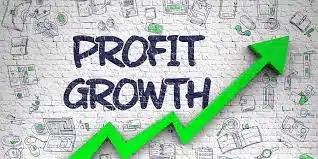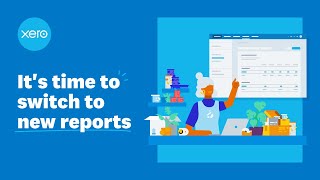Why you need to put profit first
Let’s talk about applying Profit First for small business.
Too many business owners focus on revenue and growth but fail to ensure enough profits are set aside to carry them through unexpected events and demonstrate that their asset has value.
This guide will help you understand what profit is and learn how to make sure your business remains profitable, no matter what.
Created by the experts at Imagine Accounting, it draws from Michael Michalowicz’s book Profit First, which shares a foolproof system to keep money in the bank for when it’s needed.
This guide will teach you:
- What profit really is and how it works
- What profit motivators are and how to use them
- Strategies and tactics to improve your profits
- How to put Profit First for small business
Let’s get started…
What is profit?
Profit is more than just the money you bring in. Technically, profit is your business’s revenue minus its expenses.
Profit is not:
- Cash flow
- Revenue
- Contribution/investment
It is easy to confuse cash flow with profit but they are not the same.
- Cash Flow: Money going in and coming out of the bank over a period of time
- Profit: What is leftover from your trading income after all expenses have been subtracted. This is based on accruals not cash – it can include money owed from debtors
When you work with an accountant, they will create a Profit & Loss Statement that shows you how your business makes a profit. It is a list of your sales and expenses that allows you to see where money is coming from and how much is left over at the end of a set period.
Take note: Businesses can be profitable but have poor cash flow. And healthy cash flow does not necessarily indicate profitability.
What is gross profit?
Whether you are a large or small business, gross profit = Trading Income less Cost of Sales/ Direct Costs.
Let’s break it down:
- Trading income: The income generated by your business operations. Your business may have a number of streams generating this revenue. It is the turnover, not what is left over.
- Cost of sales: The costs directly associated with the production of the goods and services you sell. For example, the cost of inventory, packaging etc.
Gross profit is also known as your ‘top line’. It is generated by every separate revenue stream. Gross profit is expressed as a percentage or a number and you want it to be as high as possible.
How to calculate gross profit margin percentage:
| Formula | Gross Profit ($) / Trading Income x 100 | Gross Profit Margin |
| Example | $10,330.23 / 19,280.00 x 100 | 53.8% |
- Different industries have profit benchmarks ranging from 10% – 80%.
- You can compare your metric within your industry; if it’s lower than the benchmark, your sales, pricing and/or direct cost adjustments must be reviewed.
Net profit explained
We have accounted for the cost of goods but not the cost of being in business. This is where Net profit comes in.
Net profit = Less Operating Expenses (OPEX).
Breaking it down:
- Operating expenses (OPEX): These are the costs that relate to the everyday running of your business. Expenses like telephone bills, rent, and office expenses. Basically the cost of opening your doors to trade, not related to production of goods and services.
Net profits are also known as your ‘bottom line’ and are expressed as a percentage or a number. They show you the percentage of sales that actually bring in profit. They are a key performance indicator (KPI). It’s necessary to monitor your net profits to make sure your business is not spending more than it earns.
Net profits are your ‘leftover’ as opposed to ‘turnover’. Remember – “Turnover is vanity, leftover is sanity”. In other words, monitoring your turnover isn’t a true indicator of your profitability.
Your net profits are also used to calculate your earnings before interest, taxes, depreciation and amortisation (EBITA), a key indicator of performance in your sector.
Confused? Talk to your accountant. It’s their job to explain this in a way that applies to your business.
How to figure out net profit margin percentage:
| Formula | Net Profit ($) / Trading Income ($) x 100 |
| Example | $4,149.89 / $19,280.00 x 100 = 21.52% |
Understanding your profit & loss statement
Understanding your profit and loss (P&L) statement is the first step to maximising profit.
You won’t know the movement of your money without analysing and understanding your P&L statements.
Take the time to go through your statements with the following in mind:
- Is your Gross Profit percentage reliable and consistent?
- Is your Cost of Acquisition Clearly Visible?
- Are your operating expenses predictable and consistent?
- Can you see Leave Accruals, Depreciation, Tax?
- Is there still money left over once the above have been deducted?
- Do you understand your business?
This last point is vital. You need to understand your business’s assets and liabilities. Understand your upcoming cash requirements and plan your business growth accordingly.
Want to design, monitor & manage your profit in your business? Do the following:
- Check balance sheets, cash statements, and profit statements monthly/quarterly.
- Check GP %, COA ratio, net profit and cash flow weekly.
Your accountant can help you by preparing a P&L statement but you still need to familiarise yourself with it and review your statements regularly.
Know your gross profit margin
Don’t confuse profit margin with markup.
- Markup: The amount that you add to the client’s cost above what you need to pay.
- Profit margin: The percentage of the overall cost accounted for by the markup.
Breaking it down:
- 20% Margin = 25% Markup
- 16% Margin = 20% Markup
For example – Job/ project:
- $100k costs (should include owner labour cost)
- 25% markup = $25k
- Therefore Price = $125k
Gross Profit (Margin) = $25k / $125k = 20%
To correctly calculate your profit margin, you must:
- Separate the Cost of Sales (COS) = all costs relating to generating revenue – salaries, materials, contractors, etc (Don’t forget to include a portion of your owner salary)
- Separate all Fixed/ Overhead Costs = everything else
You also need to calculate your profit margin for all products, services, or lines in your business. Doing so will allow you to determine and pursue your most profitable avenues.
Set your profit goal
Setting a profit goal means budgeting and forecasting.
First, understand your ‘Financial Freedom Figure’. Your FFF is the amount you can make in income that will keep your day to day expenses covered.
Your desired passive income to create FFF is worked out like this:
Required Net Assets = Net Profit Goal / Required Rate of Return (RRR)
Eg $100k / 5% = $2m
When you set your profit goal, consider your fixed and variable costs.
- Fixed (overhead) costs: These are indirect costs that stay the same regardless of your production output — includes rent, utilities, maintenance costs for your work facility, licensing fees, insurance and accounting.
- Variable costs: Direct costs, such as labour and cost of raw materials. These are only incurred when you’re creating or manufacturing a product.
Here are some steps to minimise costs in your business
- Review your operating expenses
- Seek a free option whenever possible
- Assess buying used vs new
- Avoid paying full price if possible
- Build up negotiation skills
- Seek more cost-effective options
- Delay making major purchases
- Save your splurging for your quarterly profit distribution
Profit drivers
It is hard to maximise your profits without understanding your profit drivers.
These are the factors that create your profits. They might include:
- Price (more effective for high touch)
- Volume (more effective for low touch)
- Variable costs
- Fixed costs
- Cost of debt
- Inventory/ WIP management
- Scope creep – tracking budget to actual labour/ materials
- Capacity planning, optimise productivity
These may all be expressed as:
- A number (e.g. average number of sales per month)
- A dollar figure (e.g. the average sale per client)
- A percentage (e.g. percentage of clients who are repeat business)
Keep in mind that not all profit drivers are financial. Consider these non-financial profit drivers:
- Client satisfaction
- Quality of the product or service
- Training of employees
- Employee satisfaction (morale)
- Business culture and values
- Product and process innovation
- Market share
- Employee safety
Less concrete factors than sales are also crucial to your profits.
Minimum viable revenue
Your minimum viable revenue is the point where both your fixed costs and your profit goal are covered by your gross profit.
Minimum sales requirement = (fixed costs + profit goal) ÷ gross profit margin
To work out your minimum viable revenue:
- Calculate your Fixed Costs (e.g. $100,000)
- Calculate your Profit Goal (e.g. $100,000)
- Calculate your Gross profit margin (e.g. 50%)
- Minimum sales requirement therefore ($100K + $100K) ÷ 50% = $400,000
To achieve your minimum viable revenue you need to perfect your turnover.
Turnover = number of customers x average number of transactions per customer x average value of each transaction
You will need to:
- Assess how many customers can you service (e.g. 100) (try a capacity analysis exercise).
- Calculate the average number of transactions per customer (e.g. two).
- Calculate the average value of each transaction (e.g. $5k)
(Turnover = 100 x 2 x $5k = $1m)
Consider some strategies to increase sales/revenue and improve your profit margins:
- Increase productivity of your team
- Develop new product lines
- Find new customers
- Find new markets
- Customer service
- Increase your prices
- Price discounts
- Retail displays
Create your financial scoreboard/dashboard
Your financial scoreboard or dashboard is a simple and efficient way to keep track of your profits.
Include:
- Marketing and lead generation metrics.
- Sales pipeline and conversion metrics.
- Financial and profitability metrics.
You should check your dashboard regularly and respond to it when things don’t look right.
Quality accountants can create financial dashboards that reflect your targets as a business and show the data that is most important to you.
Apply Profit First for your small business
Applying Profit First for small business means figuring out a healthy and achievable profit margin. Then putting this money aside FIRST. The remainder of your income is there for you to pay for bills, taxes and expenses.
The theory behind this is that if you account for all expenses before putting profits aside, you will never have anything left over.
Putting profits aside and not having money to cover your expenses, makes you get creative. It encourages you to find ways to increase revenue or minimise costs going forward.
Even if you master Profit First for small business and get in the habit of putting a set percentage away each month, profit should never be a set and forget situation. Review your strategy regularly and don’t lose heart if you have some months that are harder than others.
Paying attention to your profits means you will have enough funds aside to prove your business is valuable and get you through a difficult time.
Speak with an accountant to help you maximise your profits and ensure you are putting money aside on a regular basis. Contact Imagine Accounting on 02 9884 7100.




